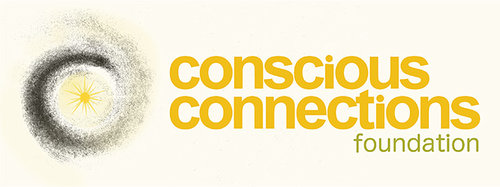by Colleen Cahill
Talk about a labor of love.
After nearly two and a half years of incubating...er...I mean, development, Conscious Connections Foundation (CCF) is proud to announce our brand new Guide to Menstrual Health for Women & Girls is complete and has already been put to use! This is BIG news for our small and mighty organization.
CCF super-hero-slash-key-partner, Kesang Yudron, led a massive effort to bring menstrual health training to the remote villages in the Upper Arun Valley in Eastern Nepal last month—our first training session since the lockdown began last year (look for this story coming soon). The women and community leaders loved the guide with all its bright and fun illustrations.
Puberty page layout
CCF Steps Up Menstrual Hygiene Management (MHM) Training Initiative
In the fall of 2018, CCF began conducting menstrual health training. This initiative grew out of our existing Power of 5 program working to educate children—with an emphasis on girls.
Through this effort to educate girls and break down cultural barriers, it was clear that without adding the menstrual health component, we’d be falling short on truly setting them up for success. It aligned well with CCF’s mission and Nepali partners led the way to get this work started.
Kesang Yudron, CCF MHM project manager, set out the goal of the initiative:
“To inform and provide access to information on Menstrual Health and Hygiene across Nepal so women have a choice to live in dignity, equality and justice.”
To date, CCF has held several trainings in Kathmandu as well as several remote areas, and until last month, there have been no specific course materials. The students and trainers asked for a more permanent and comprehensive reference tool to take home and share with others.
In doing some research to see if other organizations had an existing menstrual health manual CCF could purchase to support our training sessions, we discovered the options were proprietary and didn't quite fulfill our need for information that fit all literacy levels.
Kesang proposed to the board that the organization create its own manual and design it based on our specific training focusing on issues around gender inequality, sexual reproduction, myths, taboos and religious beliefs surrounding menstruation and the local laws that support women’s rights. She added that it should be available to anyone who wanted it so that it might be shared widely.
This was no small undertaking, but the board unanimously agreed to fund the project.
Kesang was off and running.
The “Un-Manual”
CCF formed a menstrual hygiene committee to offer support to Kesang as she gathered her team in Nepal and developed content. Together, we determined the primary goal of the manual—to simplify the menstrual health information so that students of all ages with different levels of literacy and education could understand it and get excited to share it back to their families and communities.
We wanted to avoid creating another boring textbook. To keep the students—whether female, male, young or old—engaged and curious, Kesang hired an illustrator to develop colorful, fun and informative illustrations. This talented Nepali woman, Promina Shrestha, brought the guide to life by introducing “The Egg,” our cute, friendly main character who shepherds us through the manual explaining diagrams and offering informative tips and encouragement.
Illustrator’s rough sketch of The Egg describing her journey through menstruation
For a topic in Nepal that can be taboo and shameful, this was an effective tactic to make students feel more at ease.
The team in Nepal was rounded out with help from a nurse, writer, translator, and graphic designer, with a little support from the menstrual hygiene committee stateside.
Illustrator’s rough sketch of The Egg explaining what might happen during menstruation
Comprehensive Menstrual Hygiene Content
This version of the guide is one CCF will continue to evolve going forward. Many issues were discussed and considered, but in the end, we focused in on the following outline for our first edition:
Puberty
Anatomy (male and female)
Menstruation
Menstrual Restriction, Social Norms and Taboos
Menstrual Products (Pros and Cons)
Menstruation and the Environment
Menopause
Menstrual Cycle Calendar ( Moon Cycle)
Menstruation page layout
The Introduction invites the student in with a friendly tone and immediately frames menstruation in the positive light it deserves:
Menstruation is an exciting time of change in your body and mind that signals your entry into womanhood, sexual activity, and being able to have babies. Although it’s an exciting time of change and is a completely normal and healthy process, many girls face exclusion and restriction due to the belief that menstrual blood is impure and dirty. Chauppadi, one of the most restrictive menstrual practices of confining women in small sheds, is practiced in Nepal.
This mini manual is designed to explain to families and communities about Menstrual Health and Hygiene. This Menstrual Health Manual, explains the natural and normal changes that are happening in your body. When you are more knowledgeable about your body, you will be empowered and better equipped with the information and confidence necessary to manage your long-term sexual and reproductive health.
Maintaining good menstrual health starts with understanding the changes that occur in our body during puberty.
The manual even comes complete with a menstruation calendar at the back, so the women and girls have a tool to help them learn how to track their periods!
Spreading Menstrual education far and wide
CCF published the guide under the creative commons license. It is our hope that this information is shared out freely and widely throughout Nepal and wherever menstrual health education is needed.
The guide was produced and printed in both English and Nepali. If you’d like to support this work and menstrual hygiene education in Nepal, hit the button below. Just $20 sponsors a student to attend menstrual health training. Your dollars make a huge impact.
A BIG thank you to our donors! Through you, this work has been possible.





